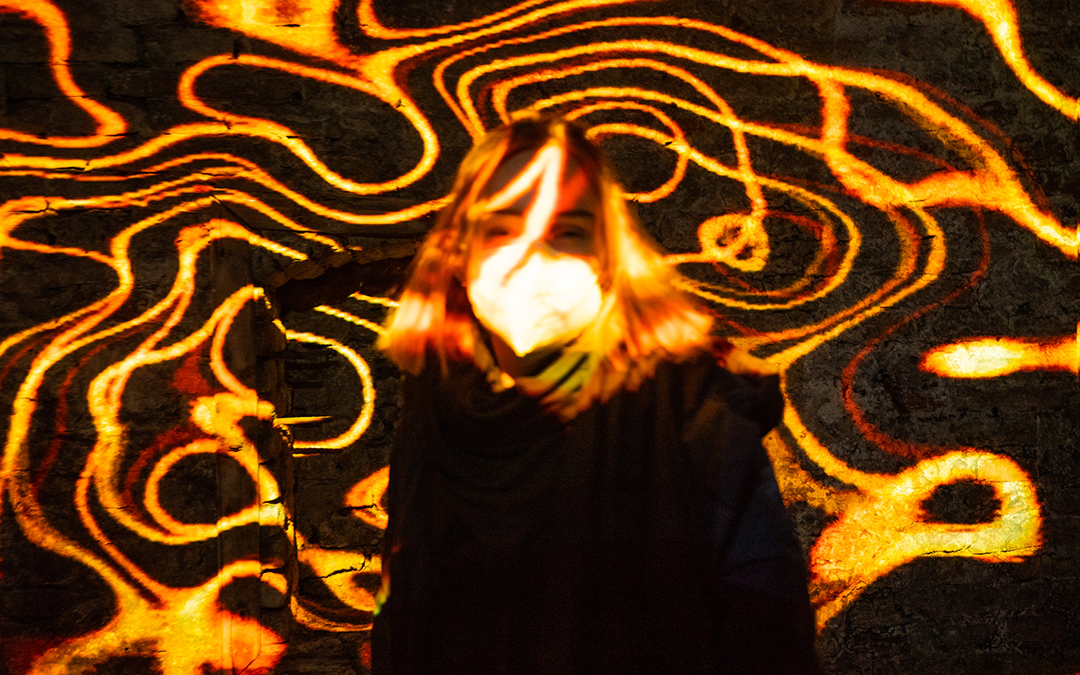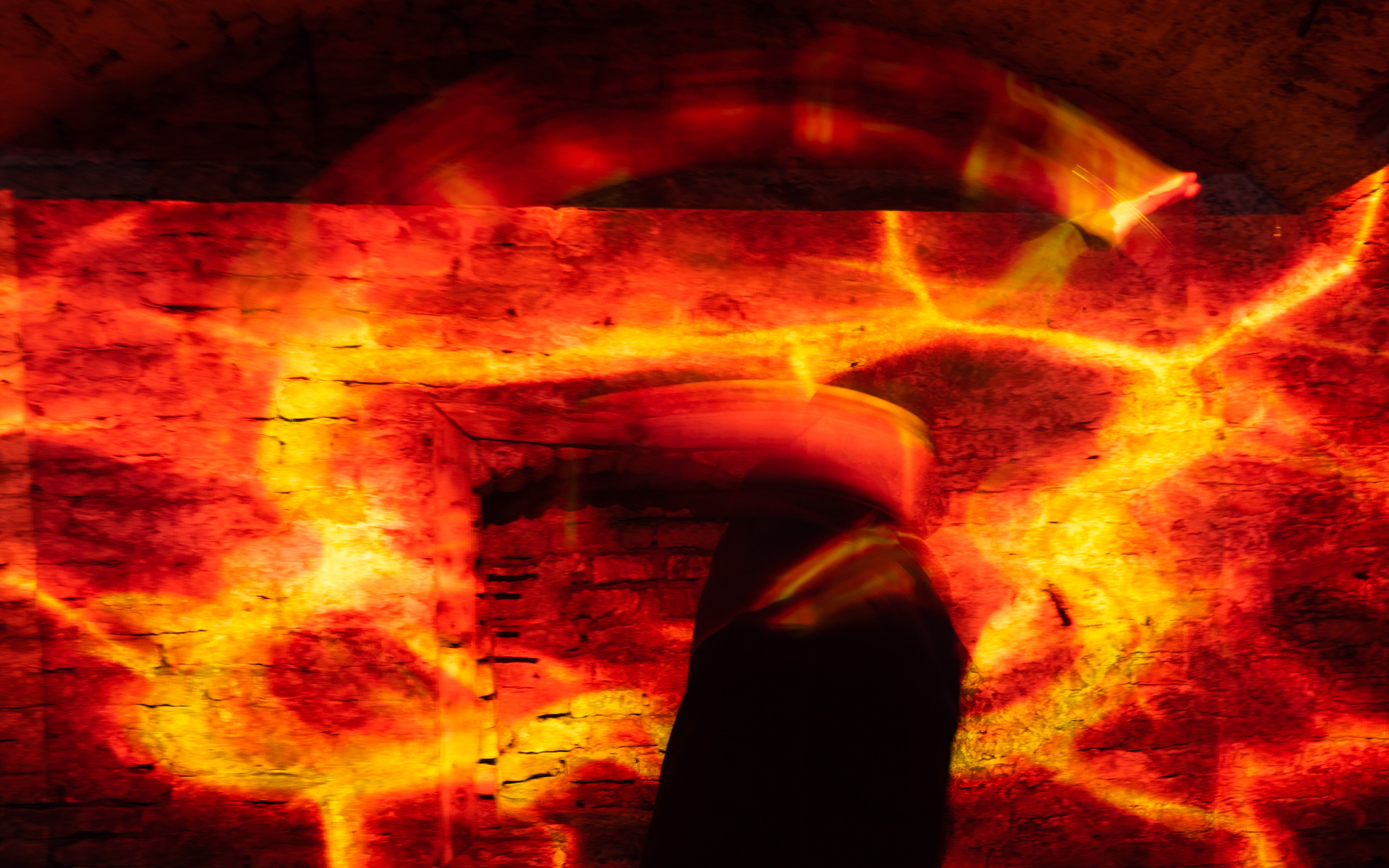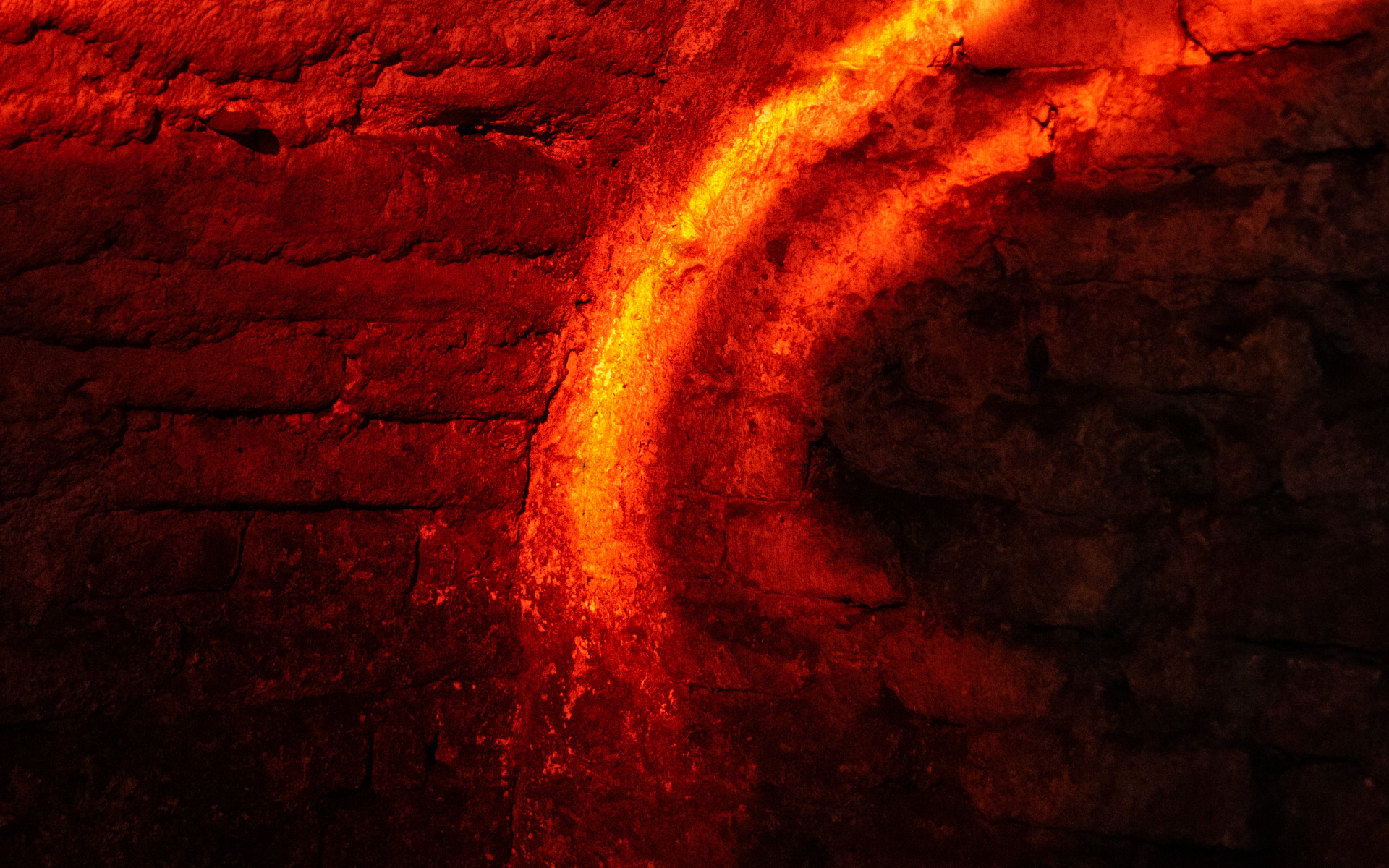Ignis – Interactive art installation
October 2020 - February 2021
Surrounded by fiery forms and a clanging sphere of sound, the viewer has no choice but to merge with the installation.
IGNIS is an interactive media art installation. In the coal cellar of the "Alte Schmiede am Milchberg", impressions of the blacksmith's craft are processed in projections. The immersive experience lives from an audio-visual composition that can be manipulated by gestures. Visitors are invited to immerse themselves in the history-rich premises and escape their everyday lives for a moment.

The real time generated visuals of our project take up motives like embers, spraying sparks or damascus steel and interpret them in an abstracted way. Complementary audio, in the form of a mixture of synthesized sounds and distorted recordings of the sound of the forge, is generated. The samples originate, for example, from falling horseshoes or hammer heads striking anvils. Dramaturgically, the sequence works constantly towards a final climax: The visual design develops from a point to a plane. In terms of content, the process can be interpreted as a progression from the first spark to white embers.

The technical set-up of the installation is based on the desire to offer the user an immersive experience that allows him to forget the outside world for a moment. In order to achieve this, a 4.1 surround sound system and three projectors are used. They can cover the entire field of vision. Furthermore, the user can interact with the visuals, using a Kinectsensor. The images generated in the software Touchdesigner react to the position of the viewer and via the software LoopMIDI the sound synthesis can be modulated in Abelton based on the arm movements. The entire setup is hidden in darkness when entering the room and is only revealed and thus demystified towards the end, when the room is bathed in brilliant white light.

The project was developed in the 5th semester, the projectsemester, with a team of nine other students.
Ignis – Interactive art installation
Projectsemester October 2020 - February 2021
Surrounded by fiery forms and a clanging sphere of sound, the viewer has no choice but to merge with the installation.
IGNIS is an interactive media art installation. In the coal cellar of the "Alte Schmiede am Milchberg", impressions of the blacksmith's craft are processed in projections. The immersive experience lives from an audiovisual composition that can be manipulated by gestures. In this way, visitors are invited to immerse themselves in the history-rich premises and escape their everyday lives for a moment.

The real time generated visuals of our project take up motives like embers, spraying sparks or damascus steel and interpret them in an abstracted way. Complementary audio is generated, in the form of a mixture of synthesized sounds and distorted recordings of the sound of the forge. The samples originate, for example, from falling horseshoes or hammer heads striking anvils. Dramaturgically, the sequence works constantly towards a final climax: The visual design develops from a point to a surface. In terms of content, the process can be interpreted as a progression from the first spark to white embers.

The technical set-up of the installation is based on the desire to offer the user a immersive experience that allows him to forget the outside world for a moment. In order to achieve this, a 4.1 surround sound system and three projectors are used. They can cover the entire field of vision. Furthermore the user can interact with the visuals, using a Kinectsensor. The images generated in the software Touchdesigner react to the position of the viewer and via the software LoopMIDI the sound synthesis can be modulated in Abelton based on the arm movements. The entire setup is hidden in darkness when entering the room and is only revealed and thus demystified towards the end, when the room is bathed in brilliant white light.

The project was developed in the 5th semester, the projectsemester, with a team of nine other students.
